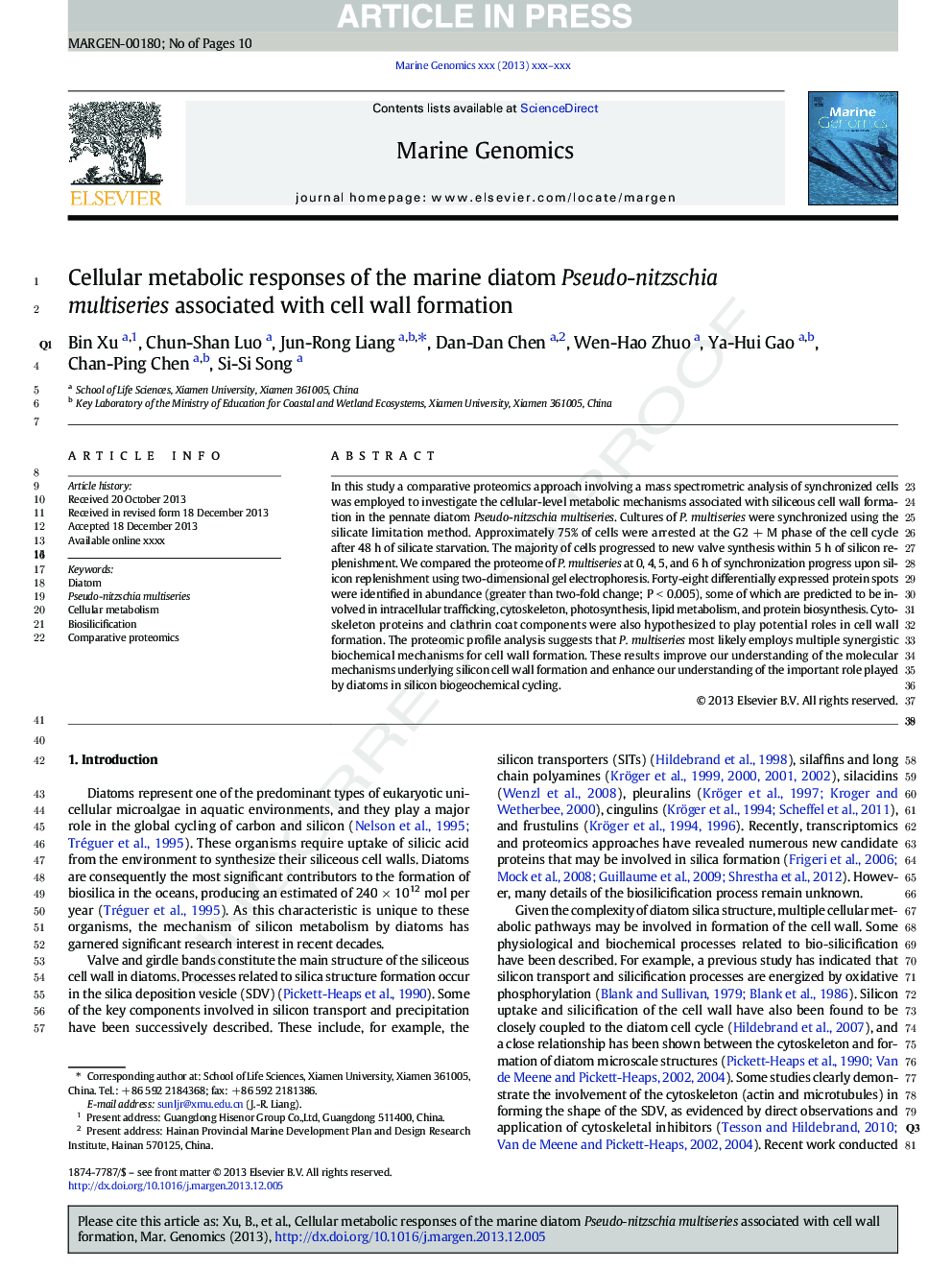| Article ID | Journal | Published Year | Pages | File Type |
|---|---|---|---|---|
| 8388568 | Marine Genomics | 2014 | 10 Pages |
Abstract
In this study a comparative proteomics approach involving a mass spectrometric analysis of synchronized cells was employed to investigate the cellular-level metabolic mechanisms associated with siliceous cell wall formation in the pennate diatom Pseudo-nitzschia multiseries. Cultures of P. multiseries were synchronized using the silicate limitation method. Approximately 75% of cells were arrested at the G2Â +Â M phase of the cell cycle after 48Â h of silicate starvation. The majority of cells progressed to new valve synthesis within 5Â h of silicon replenishment. We compared the proteome of P. multiseries at 0, 4, 5, and 6Â h of synchronization progress upon silicon replenishment using two-dimensional gel electrophoresis. Forty-eight differentially expressed protein spots were identified in abundance (greater than two-fold change; PÂ <Â 0.005), some of which are predicted to be involved in intracellular trafficking, cytoskeleton, photosynthesis, lipid metabolism, and protein biosynthesis. Cytoskeleton proteins and clathrin coat components were also hypothesized to play potential roles in cell wall formation. The proteomic profile analysis suggests that P. multiseries most likely employs multiple synergistic biochemical mechanisms for cell wall formation. These results improve our understanding of the molecular mechanisms underlying silicon cell wall formation and enhance our understanding of the important role played by diatoms in silicon biogeochemical cycling.
Keywords
Related Topics
Physical Sciences and Engineering
Earth and Planetary Sciences
Earth and Planetary Sciences (General)
Authors
Bin Xu, Chun-Shan Luo, Jun-Rong Liang, Dan-Dan Chen, Wen-Hao Zhuo, Ya-Hui Gao, Chang-Ping Chen, Si-Si Song,
